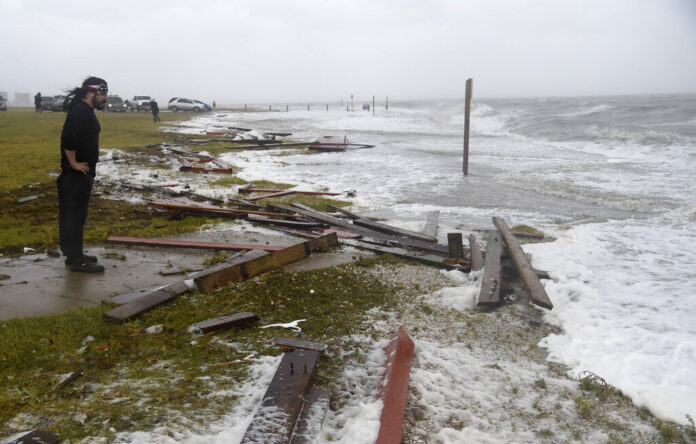Predictions are just beginning to trickle in, but so far indicators point to an active or above average Atlantic hurricane season just over the horizon.
Those forecasts synch with new information from National Oceanic and Atmospheric Administration, which won’t release its official 2021 season outlook until late May but did announce that, beginning this season, NOAA’s Climate Prediction Center will base its outlooks on the new 30-year “period of record,” 1991 to 2000.
Accordingly, NOAA has updated its averages for hurricane season, from 12 named storms and six hurricanes based on 1981-2020 data to 14 named storms and seven hurricanes. The average for major hurricanes (Category 3-5) remains unchanged at three storms.
So far only five of the 28 entities that issue hurricane season outlooks each year had done so as of April 12. Of those five, four were private weather-forecasting companies and one, Colorado State University, an academic institution. In all five cases, however, the 2021 season was predicted to be more active than usual in terms of named storms, hurricanes and major hurricanes.
“This is going to be a general statement because we’re early, but the bottom line is that the indicators that we look for to determine how active or inactive the Atlantic season might be are currently pointing to an active season,” said Barry Goldsmith, warning coordination meteorologist with the National Weather Service Brownsville/Rio Grande Valley.
“That equates to above average.”
Some forecasters make predictions in early April to provide a reference point, he said. When NOAA issues its outlook the week before Memorial Day, it will be based on more recent data regarding factors such as wind shear and dry air that dictate whether a season will be active or not, Goldsmith said.
“Things can change from early April to late May and NOAA is very keen to that,” he said.
Hurricane Awareness week is May 9-15 this year. Goldsmith said there’s plenty of discussion among meteorologists and climate scientists over how long the current active cycle will last. He explained that there are two long-duration circulation patterns in Earth’s ocean atmosphere system, thermohaline circulation and the Atlantic multidecadal oscillation. Each tends to have 30-year oscillation cycles, meaning roughly 30 years of relative activity circulation followed by 30 years of less activity, Goldsmith said.
“Beginning in 1995 we went from a relatively inactive 30-year phase to a relatively active 30 year phase,” he said. “Being in 2021, we’re still in that 30-year active phase.”
Goldsmith said more research needs to be done to find answers about the relationship, if any, between climate change and more active hurricane seasons. The main effect of climate change is on sea surface temperature and the depth of that temperature, he said. And while powerful hurricanes depend on warm water to intensify, that’s only one of the necessary ingredients, he said. In the presence of dry air and/or wind shear, no amount of warm seawater will allow development, Goldsmith said.
If climate change does play a role in storm development, it could be in the form of rapid intensification of Atlantic hurricanes in recent years, he said.
“Now instead of having a Ferrari you have a Lear jet,” Goldsmith said.
Two things are certain at any rate. One is that the forecasters and tropical storm experts will be talking a lot more about hurricanes and hurricane preparedness as this year’s hurricane season, which runs from June 1 to Nov. 30, draws nearer. Another is that hurricane behavior is not set according to a timer. The fact that 12 years passed between visits by Hurricane Dolly (2008) and Hurricane Hanna last year in no way means that South Texas is off the hook for another 12 years, Goldsmith said.
“That’s not how it works,” he said.
Even in an otherwise inactive season, all it takes is one week of all the pieces — moist air, little or no wind shear and warm Gulf water — falling into place at the same time, Goldsmith said.
“All of these things come into play and the next thing you know you have, drum roll, Hurricane Harvey,” he said. “Hurricane Harvey (2017) is a great example of that. It had become a degenerated wave, and then it found its footing within those parameters. It wasn’t far away from becoming a Category 5 before it made landfall on the coastal bend near Rockport. Could that be us someday? Absolutely. We have to prepare that that could happen in any year.”





